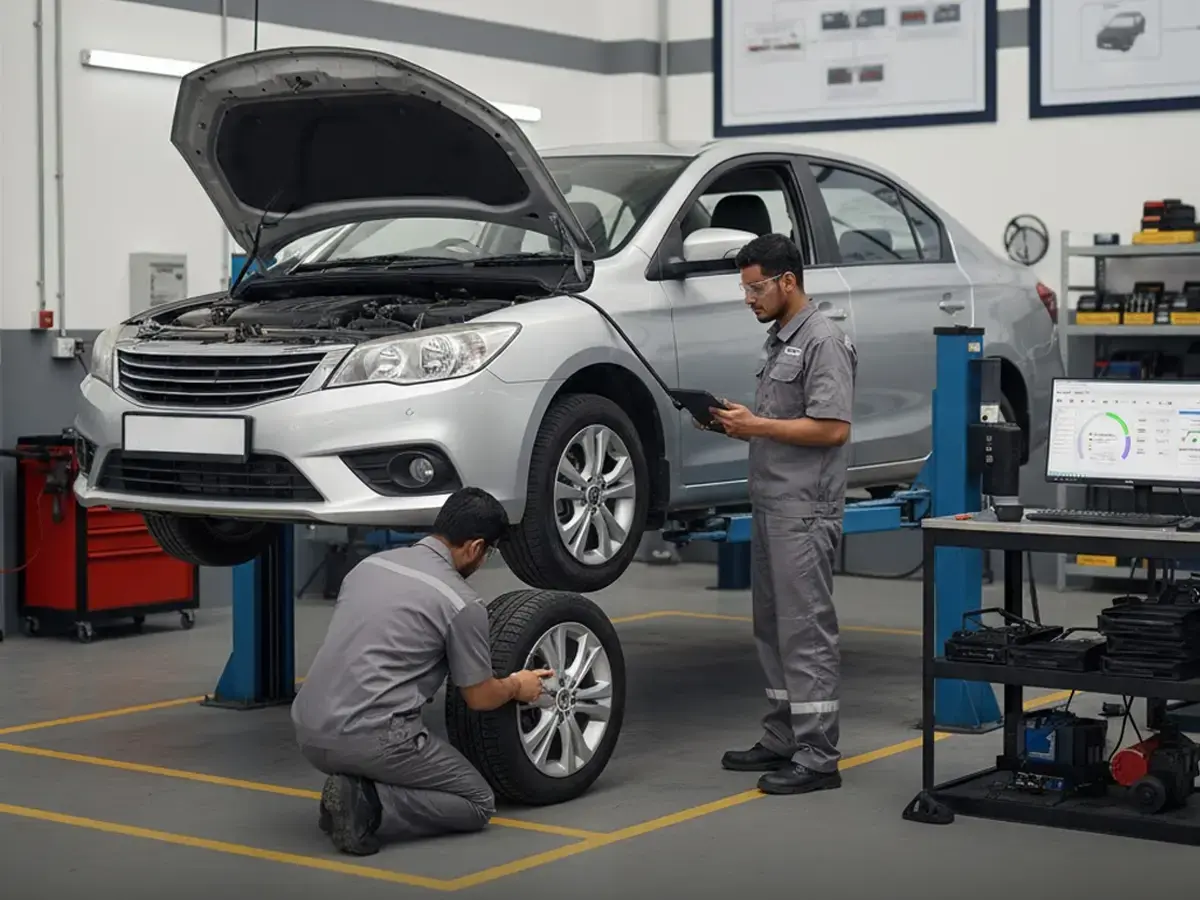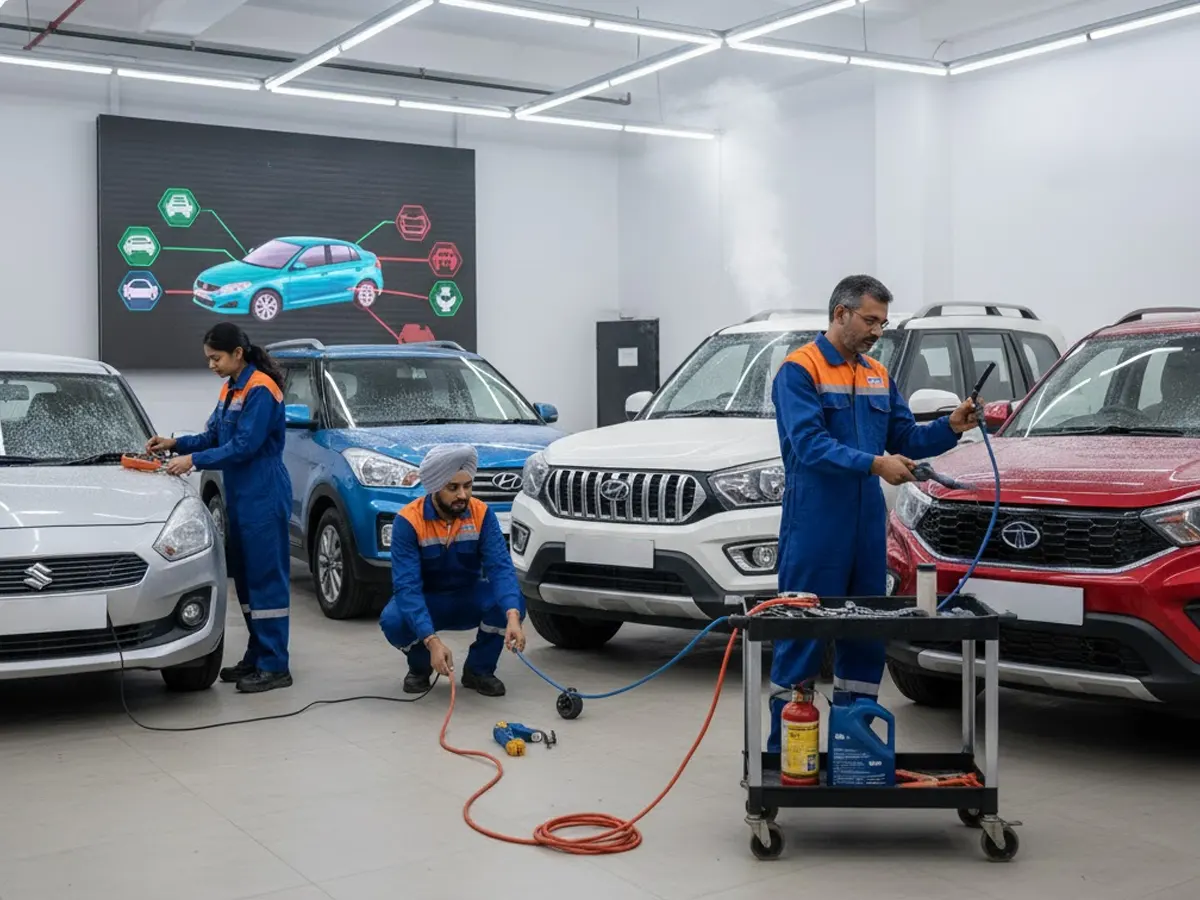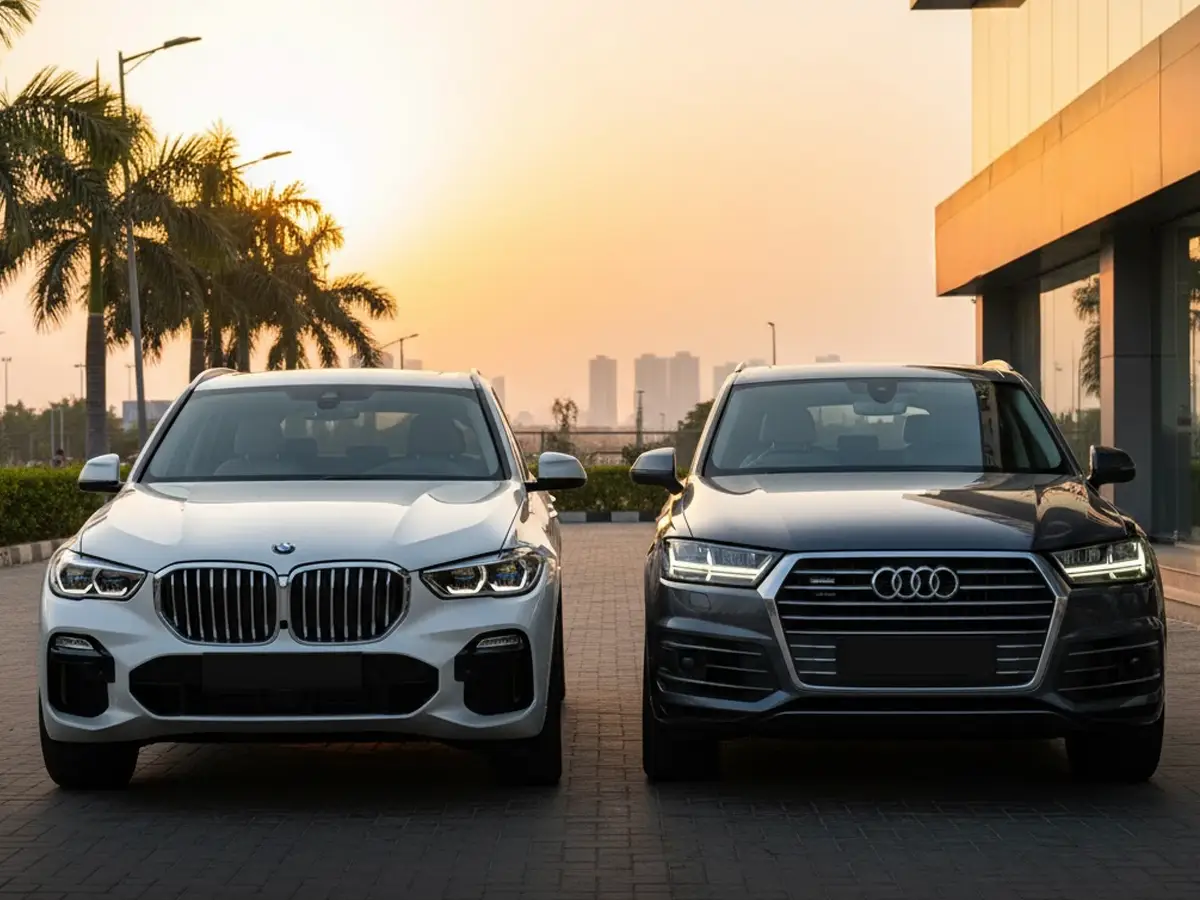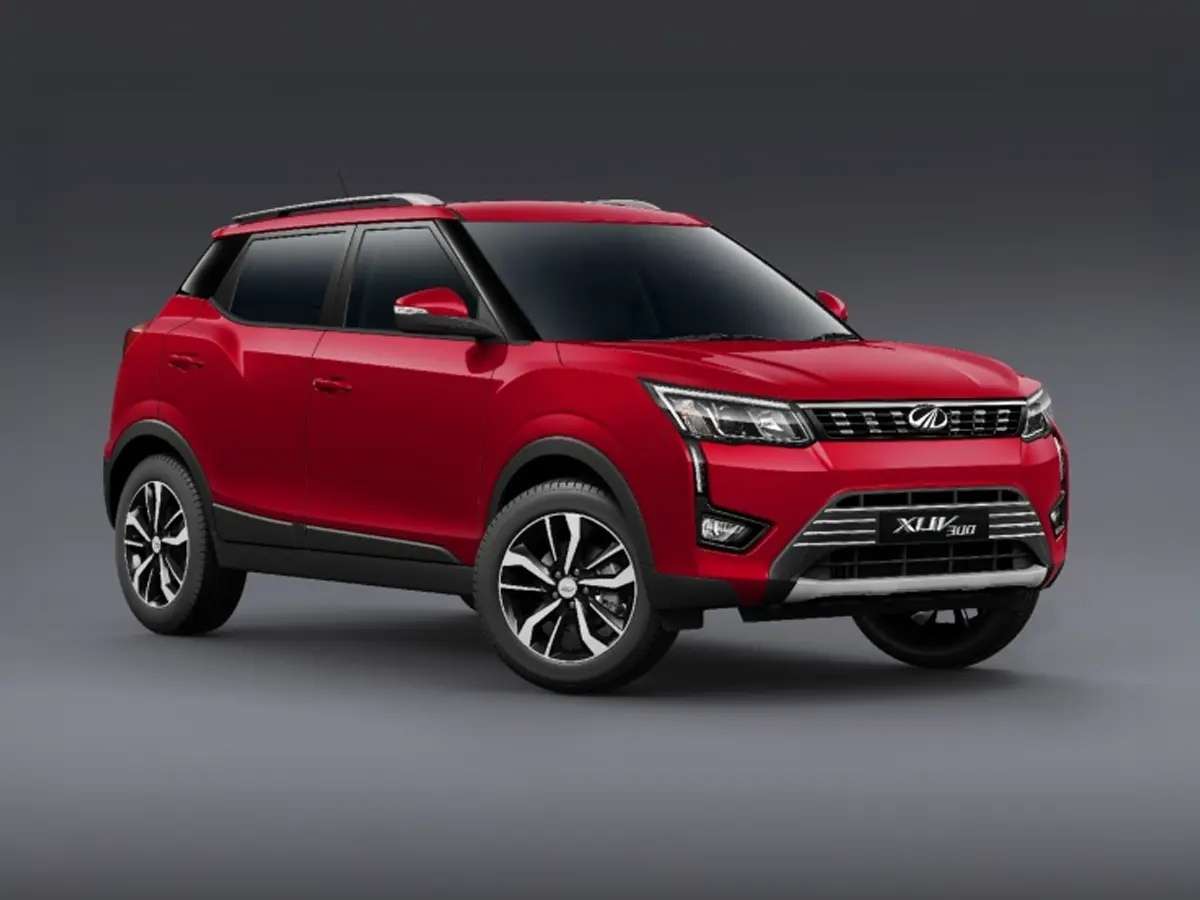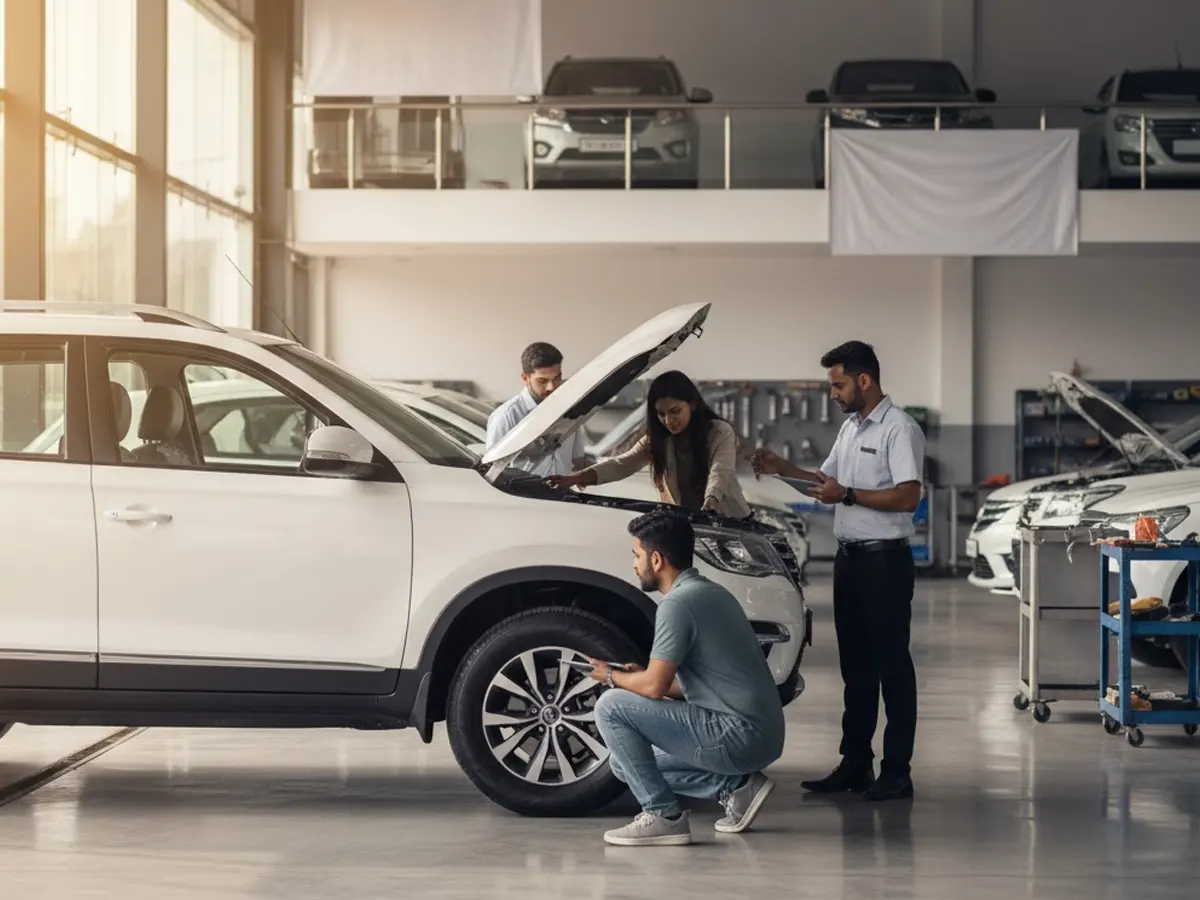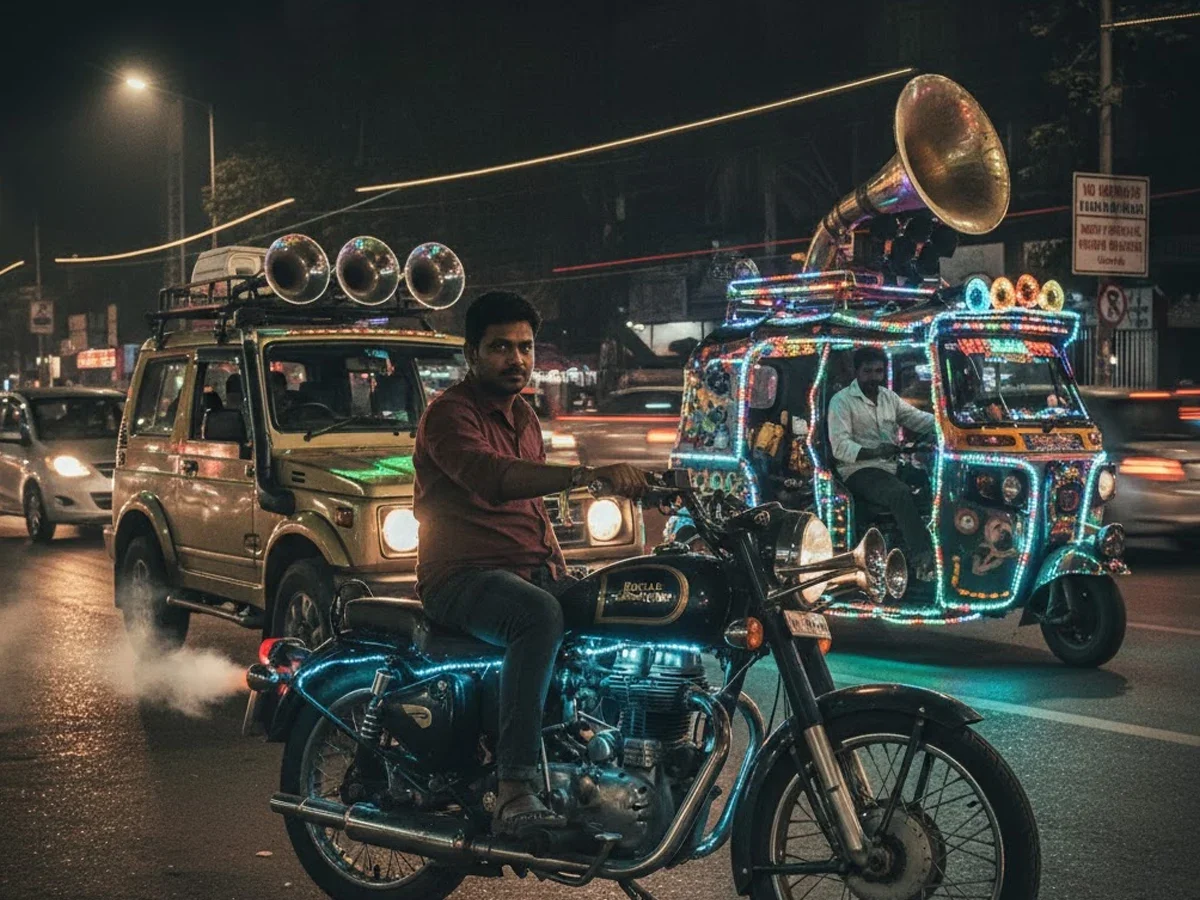

Modified Exhausts, Loud Horns & Fancy Lights: The Upgrades That Can Get You Challaned
- 1Modifications like loud exhausts and lights can attract a modified exhaust fine
- 2CMVR outlines strict limits on noise, emissions, and lighting to keep vehicles safe
- 3Responsible upgrades with RTO-approved parts ensure safety and peace of mind
India's car culture has come a long way from factory stock sets to enthusiasts chasing louder and flashier aftermarket kits. But there is a thin line between minor customisations and those that go beyond the legal limits. What may look (or sound) like a harmless upgrade can actually attract a modified exhaust challan fine or penalties for using unauthorised horns or lights. All of these come under specific provisions of the Motor Vehicles Act.
Let's go over the points where enthusiasts often go wrong, what the law really says and how you can remain in compliance, while at the same time giving yourself the freedom to personalise your ride.
Understanding Why Modifications Attract Challans
Creativity is not prohibited by law: it is about protecting the safety, environmental emissions and noise standards. According to Section 52 of the Motor Vehicles Act, no vehicle can be modified in a manner that affects its structure or specification without the consent of the RTO.
When you modify exhausts, install pressure horns or fit high-intensity auxiliary lights, the type certificate approved for the vehicle is altered, which technically makes it "illegal to use on the road." This leads to a modified exhaust challan fine of up to ₹10,000 and even temporary impoundment of your vehicle in extreme cases.
Exhaust Modifications and the Law
Aftermarket exhausts are often installed to enhance performance or to add a sporty note to the vehicle. But in India, noise levels are strictly regulated under Rule 120 of the Central Motor Vehicle Rules (CMVR).
Here is how violations typically happen:
- Exhausts without catalytic converters or silencers.
- Sound levels exceeding 80 dB for two-wheelers and 75 dB for cars.
- Straight pipes or tune mods that amplify exhaust backfire.
These types of setups not only violate the emission standards, but they also attract hefty fines.
Horn Regulations and Noise Restrictions
Loud horns may look like they are harmless, but they are one of the major causes of noise pollution in the country. Under Rule 119 of the CMVR, horns specified by the manufacturer and approved by CMVR up to 100 dB can be used for private vehicles. Pressure horns, train horns or multi-tone air horns are strictly prohibited.
Common offences that invite challans include:
- Horns louder than 100 dB.
- Aftermarket air horns or truck-type units on cars or bikes.
- Continuous honking near silence zones such as schools and hospitals.
The penalty for violating this usually varies, but can go up to ₹10,000 and repeated offences can result in vehicle seizure.
Rules Governing Fancy or Auxiliary Lights
Although auxiliary LED bars, underbody glow lights, or coloured DRLs may look stunning at night, they are often illegal for public roads. Private vehicles are only allowed to use white (front) and red (rear) lights as stated in Rule 104 of the CMVR. The use of any coloured light or high-intensity beam that unreasonably dazzles other drivers is an offence.
What counts as a violation:
- Flashing or strobe lights.
- High-mounted light bars on windshields or roofs.
- Coloured underbody or cabin LEDs visible outside.
- Using fog lamps as primary headlights.
The fines vary depending on the severity of the violation and usually range between ₹500–₹2,000.
Enforcement Trends Across Indian States
In the past few years, authorities have stepped up checks and have started penalising modified vehicles across the country. For instance:
- Maharashtra police filed cases against 2,400+ vehicle owners in 2024 for fitting modified silencers.
- Hyderabad police booked 1900+ cases in early 2024 on two-wheelers with modified exhausts.
These are just a few of the many cases that are filed every year in the country. This shift shows a growing focus on safety, emissions, and urban noise control in the country.
How to Modify Responsibly and Stay Compliant
You do not have to give up personalisation altogether. All you need to know are the legal limits. Here is how you can modify responsibly without incurring a modified exhaust challan fine or any other penalties:
- Stick to RTO-approved or manufacturer-verified accessories.
- Ensure all lights, horns, and exhausts comply with CMVR standards.
- Get written approval from the RTO before making any major mechanical or cosmetic changes.
- Replace worn-out factory parts only with genuine OEM or ARAI-approved components.
- If you are unsure, consult a certified garage familiar with local compliance standards.
And of course, always double-check your challan history. You can simply do an e challan check online via the CARS24 Challan Checker, which is the easiest way to check all your pending fines in one place.
Why Following These Rules Matters
Such laws are not just for revenue or regulation. Excessive noise, blinding lights, and modified emissions impact everyone from pedestrians to other drivers. A compliant setup means your vehicle remains road-legal, insurable, safe and it will also make it easy to sell the car later. In a nutshell, the true flex is all about smart and legal modification.
Summary
Modifications can surely improve the character of your car, but not every upgrade is actually road-legal. With the fact that surveillance is now digital and enforcement is stricter than ever, a modified exhaust challan fine is a likely possibility if your vehicle does not meet the legal modification requirements.
Follow CMVR standards, use approved components, and perform an e challan check online every now and then to ensure that your vehicle record stays clear. Customise, but responsibly, because style should never come at the cost of safety or legality.
Frequently Asked Questions
Expand all